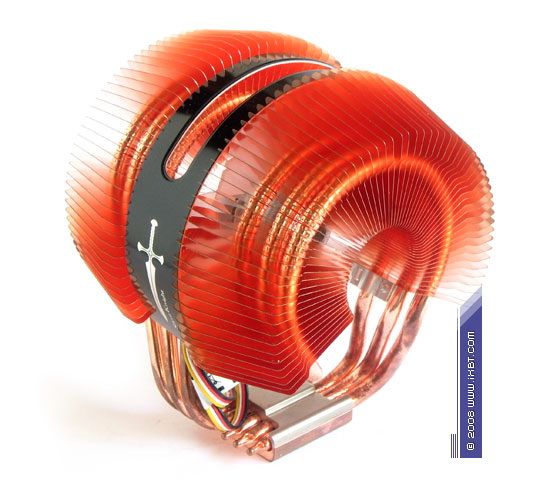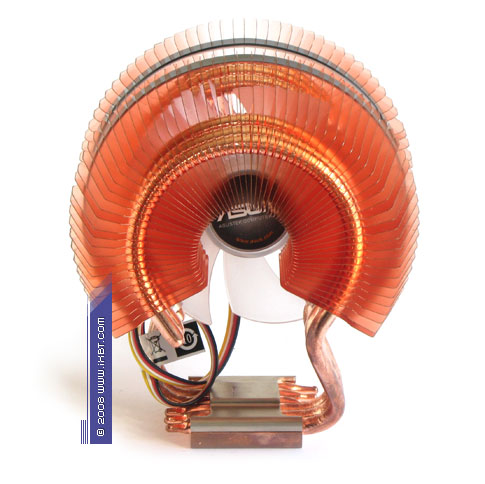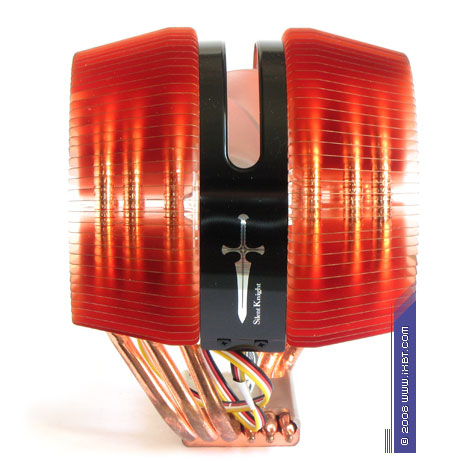We've reviewed quite a few Mid-End coolers from ASUS, which almost always had decent technical properties. Of course, the company has been thoroughly developing its High-End series as well, adding new interesting models regularly. But to our great regret, premium coolers from ASUS found their way to Russian retail stores only last year, and the range of available models was initially far from good.
Fortunately, it has changed to better and you can get almost any actual model and the range is expanded timely. So, now we can review these interesting coolers without any reservations concerning their unavailability. And the first product to be reviewed now is Silent Knight II -- a promising premium cooler, which offers an interesting combination of advanced design and attractive exterior.
First of all, let's examine design and usability of ASUS Silent Knight II and then analyze purely practical functionality of our product under review.
Design
Being a High-End product, Silent Knight II is rigged up to impress: the cooler consists of a copper heatsink (40x38x7 mm), six copper heat pipes (6 mm in diameter), and copper finning (two-section radial structure, 115x110 mm), and an on-board fan (92x92x25 mm, 2400 rpm, PWM control).
This cooler offers good thermal features as well -- two independent fin-stacks (each one is supported by three heat pipes), 64 fins in a stack (0.2 mm thick, placed at 1 mm steps at the inner circle and at 4 mm at the outer circle). Even though the heatsink is quite compact, the total heat exchange surface area reaches about 4000 cm2, which agrees with High-End parameters (Silent Knight II almost catches up with Scythe Ninja and outscores Zalman CNPS9500 in this respect).
Besides, the on-board fan is installed in a smart way -- not on the edge of the cooler, but in the center, between two fin-stacks. So, we get a harmonious "heatsink + fan" system, which creates favorable conditions for the airflow: hydraulically balanced configuration of finning (wide steps, short interfin passage) and double sided ventilation contributes to a pronounced airflow at the output and at the input of the impeller, providing acceptable heat exchange coefficients.
Another synergetic ameliorant is a decorative fan cover -- along with its pure design responsibilities, it raises the static pressure and improves efficiency of the impeller. A special note should be made of fan geometry (little cuts at the edges, fixed near the hub -- this technical trick sort of moves fin-stacks apart in the aerodynamic sense), which helps obscure unpleasant noise typical of the close fan position between fin-stacks.

However, there is one negative nuance in Silent Knight II, when we speak of the contact between heat pipes and fins: fins are just pressed on the pipes, instead of good old soldering, which is an obvious solution for mating copper elements. This is not very good, as far as technical etiquette is concerned. But the fin-pipe contact is very tight, and the critical contact between the heat pipes and the base is soldered. So in the grand scheme of things, this sin is not very important. Besides, judging by results of Silent Knight II, it does not have a serious effect on thermal resistance of the cooler.
What concerns the on-board fan, we have no gripes with it at all -- Silent Knight II comes with a very good model (Bi-Sonic SP922512P-4M), offering neat technical characteristics. For example, the fan demonstrates perfect order in its aerodynamic parameters: wide crescent chord, moderately aggressive angles of attack, and balanced filling of the work field (increased chord-step ratio in comparison with typical solutions, optimized ratio of hub-blade radii) -- all these complex parameters speak for well thought-out impeller configuration, designed for increased performance and noise reduction. Technical quality of the fan won't disappoint you either -- high-Q mechanics (improved plain bearing) and neat electric fitting, which efficiently neutralizes structural side noise (aka electroacoustic effect, engine popping -- it's not detected in the noise spectrum of Silent Knight II).
So, we've covered individual design features of our product under review. And now let's address its usability.
Write a comment below. No registration needed!





